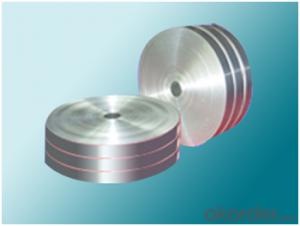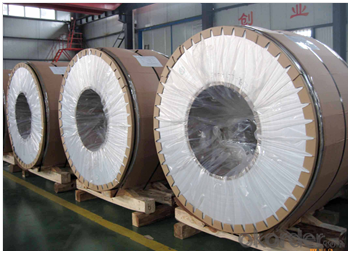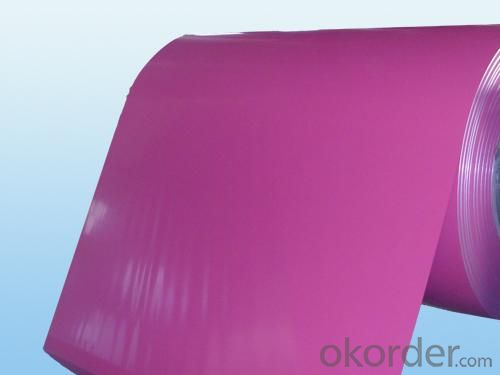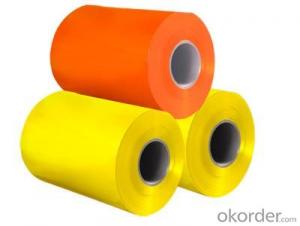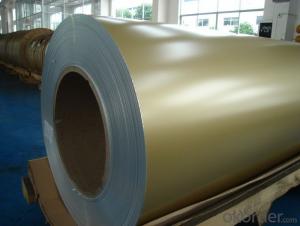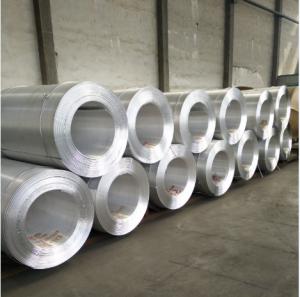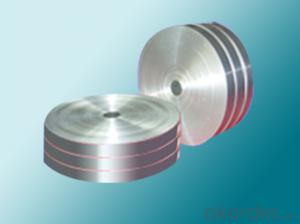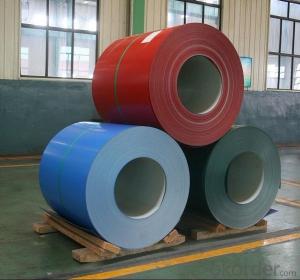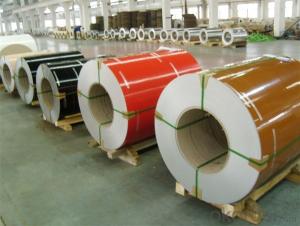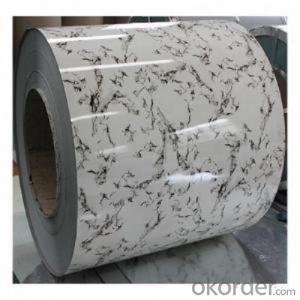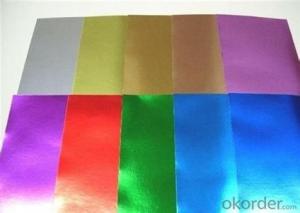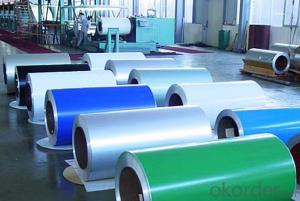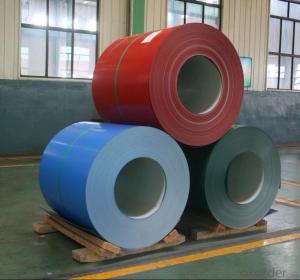Pvdf Coated Color Painted Aluminum Coils for Outer Decoration
- Loading Port:
- Shanghai
- Payment Terms:
- TT OR LC
- Min Order Qty:
- 5 m.t.
- Supply Capability:
- 100000 m.t./month
OKorder Service Pledge
OKorder Financial Service
You Might Also Like
Specification
1.Structure of Color Painted Aluminium Coils for Outer Decoration
Color Painted Aluminium Coils for Outer Decoration is one semi-finished aluminium material. This strip can be rolled down to aluminium coil,sheet,circle ect. The alloy AA1050 is widly used in building, industry ect. Its weight is much lower than steel. So many customers choosed aluminium material instead of steel.
2. Main features of Color Painted Aluminium Coils for Outer Decoration
a.Competitive price---We have our own mills and can produce mill finished aluminium coils, so we can control the production cost better.
b.Professional after-sale service---We have more than 15 years exportation experience and you need not worry about the exporation problems.
c.Fast delivery time---We can control the delivery time within 35 days.
3. Image of Color Painted Aluminium Coils for Outer Decoration
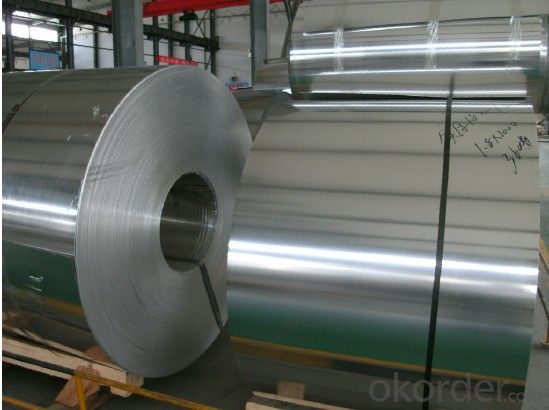
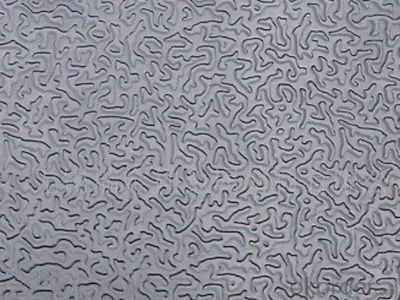
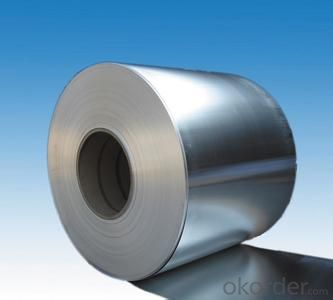
4. Product Specification
| ALLOY | TEMPER | COATING THICKNESS | THICKNESS | WEIGHT |
| AA1050 | F | 22-25 MICRONS | 0.2MM-3MM | 2 TONS |
5.FAQ:
What is the quality standard?
---Usually our standard is GB3880-2006
What is the largest width?
---It is 2300mm
What is the MOQ?
---Usually we can accept 80 tons.
- Q: Aluminum extrusions are bars made with hollow cavities that allow each to be joined easily, using special connectors. The primary difficulty when painting aluminum extrusions centers on the fact that they are nonporous and durable. Each of these traits creates a complication of its own.
- Your question supposes that you need to Paint the Aluminum Extrusion. The more common thing to do is to Anodize the extrusion. This process coats all surfaces with a hard durable coating. There are several colors available. Actually It's common to use Urethane's to paint Aluminum and the primer isn't simply made for metal, but is specifically for Aluminum. A lot of Airplanes are coated every day in this manner. Methods for coating the insides of tubing have been used for a very long time. You basically fill the tube with primer or coating then drain the excess out (dip method) and difficult shapes can be powder coated or electro static coated. Extrusions can be roller coated after cleaning, vinyls work very well with out priming. Think Toothpaste tubes.
- Q: Can aluminum coils be used in curtain wall systems?
- Yes, aluminum coils can be used in curtain wall systems. Aluminum is a popular material choice for curtain walls due to its lightweight, durable, and corrosion-resistant properties. Aluminum coils can be easily fabricated and formed into the desired shapes and profiles required for curtain wall systems, making them a suitable option for this application.
- Q: What are the different coil coating technologies used for aluminum coils?
- Aluminum coils can be coated using various technologies, each with its own advantages and suitability for specific applications. The first method involves applying liquid coatings onto the aluminum coils. These coatings can be solvent-based or water-based and are typically applied using roll coating or spray coating techniques. Liquid coatings provide a wide range of color options, excellent chemical resistance, and good adhesion to the substrate. However, they may take longer to dry and result in uneven coating thicknesses. Another method is using powder coatings, which are electrostatically applied as a dry powder onto the aluminum coils. The coated coils are then heated to melt and cure the powder, creating a tough and durable finish. Powder coatings offer excellent corrosion resistance, UV resistance, and impact resistance. They also have a high deposition efficiency, resulting in minimal waste. However, compared to liquid coatings, they may have limited color options. PVDF coatings are a type of liquid coating known for their exceptional weatherability and durability. They are resistant to fading, chalking, and chemical exposure, making them suitable for architectural applications requiring long-term performance and color retention. PVDF coatings can be applied using roll coating or spray coating methods. Polyester coatings are widely used in various industries due to their cost-effectiveness and versatility. They offer good color retention, flexibility, and resistance to abrasion. Available in a wide range of colors and textures, polyester coatings are suitable for decorative applications. They can be applied using both liquid and powder coating methods. Polyurethane coatings provide excellent adhesion, flexibility, and impact resistance. They are commonly used in demanding applications that require durability and resistance to harsh environments. Polyurethane coatings offer good color retention and can be applied using liquid coating techniques. In conclusion, there are several different coil coating technologies available for aluminum coils, including liquid coatings, powder coatings, PVDF coatings, polyester coatings, and polyurethane coatings. The choice of coating technology depends on factors such as desired performance characteristics, application requirements, and cost considerations.
- Q: How do aluminum coils contribute to energy-efficient lighting?
- The energy efficiency of lighting systems is greatly enhanced by aluminum coils. The exceptional thermal conductivity of aluminum coils is the main advantage when used in lighting applications. Due to its high thermal conductivity, aluminum can effectively transfer heat away from the light source and disperse it into the surroundings. This property prevents lighting fixtures from overheating and ensures the longevity and efficiency of the entire system. Furthermore, aluminum coils are lightweight and have a high strength-to-weight ratio, making them perfect for creating compact and durable lighting fixtures. By utilizing aluminum coils, manufacturers can design and produce lighting products that are lighter and more efficient, thereby reducing overall energy consumption. Additionally, aluminum coils have a high reflectivity, allowing them to efficiently distribute and reflect light. This characteristic results in better light output and ensures that a larger portion of the emitted light is effectively utilized, thereby reducing energy waste. Moreover, aluminum is a highly recyclable material that can be reused and repurposed multiple times without losing its qualities. This recyclability contributes to the overall sustainability of energy-efficient lighting systems, reducing the environmental impact associated with their production and disposal. To sum up, aluminum coils contribute to energy-efficient lighting by effectively dissipating heat, reducing energy consumption through lightweight designs, optimizing light distribution, and promoting sustainability through recyclability.
- Q: What are the different surface finishes available for aluminum coils?
- There are several different surface finishes available for aluminum coils, including mill finish, brushed finish, embossed finish, anodized finish, and painted finish.
- Q: Are aluminum coils easy to install?
- Yes, aluminum coils are generally easy to install. They are lightweight and flexible, which makes them easier to handle and maneuver during installation. They can be easily cut and shaped to fit the specific requirements of the installation, and they are often available in pre-cut sizes, further simplifying the installation process. Additionally, aluminum coils are typically designed with features such as interlocking edges or snap-on connectors, which make it easier to join multiple coils together or connect them to other components. Overall, with the right tools and basic knowledge of HVAC installation, aluminum coils can be installed relatively easily.
- Q: Can aluminum coils be utilized as materials for constructing roofs?
- <p>Yes, aluminum coils can be used for roofing materials. They are known for their durability, corrosion resistance, and lightweight properties, making them an excellent choice for roofing. Aluminum's reflective surface also helps in energy efficiency by reflecting sunlight and reducing heat absorption. It's recyclable and has a long lifespan, which contributes to its sustainability. However, it's important to ensure that the aluminum coils are of the appropriate gauge and quality for the specific roofing application to guarantee structural integrity and performance.</p>
- Q: This question asks for a comparison of the benefits and drawbacks of utilizing aluminum coil in insulation applications.
- <p>Aluminum coil has several advantages for insulation, including its high thermal conductivity, which allows for efficient heat transfer, and its lightweight nature, making it easy to handle and install. It also offers good resistance to corrosion and is cost-effective compared to other materials. However, it has some disadvantages such as low strength, which may require additional support structures, and it can be prone to denting or damage if not handled carefully. Additionally, aluminum's high conductivity can lead to increased heat loss if not properly insulated, and it may require more frequent maintenance due to its susceptibility to environmental factors.</p>
- Q: This question asks for a comparison between standard and non-standard welding wires used with aluminum coils, highlighting their differences.
- <p>Standard welding wire for aluminum coils is designed to meet specific industry standards, ensuring consistent quality and performance. It is made from high-quality aluminum alloys and is tested for properties like tensile strength, ductility, and resistance to corrosion. Non-standard welding wire, on the other hand, may not adhere to these strict specifications and could be made from lower-grade materials. This can result in inconsistent weld quality, weaker joints, and a higher risk of failure. Non-standard wire may also not provide the same level of corrosion resistance, which is critical for aluminum welding applications.</p>
- Q: Are aluminum coils resistant to saltwater corrosion?
- Generally, aluminum coils exhibit resistance to corrosion caused by saltwater. Aluminum is widely recognized for its exceptional corrosion resistance, particularly in marine settings where exposure to saltwater is common. The naturally occurring oxide layer on the surface of aluminum acts as a shield, effectively preventing direct contact between the aluminum and the corrosive saltwater. This oxide layer serves as a protective barrier against saltwater corrosion. Moreover, various coating techniques, such as anodizing or painting, can be employed to further enhance the resistance of aluminum coils against saltwater corrosion. Nevertheless, it is worth noting that prolonged or continuous exposure to saltwater can gradually deteriorate the protective oxide layer and potentially result in corrosion, albeit at a slow pace. To prolong the lifespan and optimize the performance of aluminum coils in saltwater environments, regular maintenance and appropriate care are essential.
Send your message to us
Pvdf Coated Color Painted Aluminum Coils for Outer Decoration
- Loading Port:
- Shanghai
- Payment Terms:
- TT OR LC
- Min Order Qty:
- 5 m.t.
- Supply Capability:
- 100000 m.t./month
OKorder Service Pledge
OKorder Financial Service
Similar products
Hot products
Hot Searches
Related keywords
